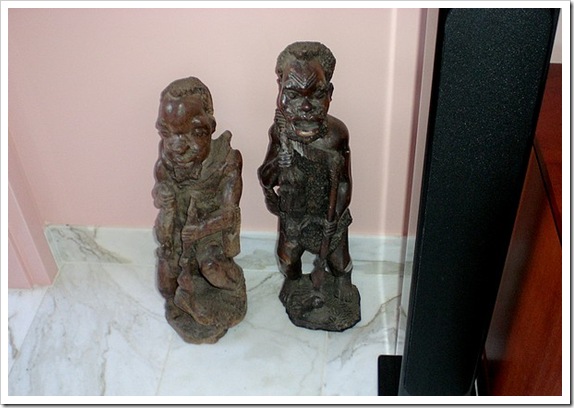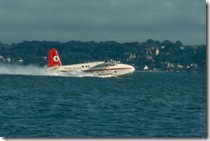I spotted this group at an Elizabeth Street bus stop this afternoon.


Thought back ten years to “Hiro” (really Kyohito) — 04 — a learning journal from 1998: Literacy — My year with a Japanese Backpacker.
I spotted this group at an Elizabeth Street bus stop this afternoon.


Thought back ten years to “Hiro” (really Kyohito) — 04 — a learning journal from 1998: Literacy — My year with a Japanese Backpacker.
New or revised pages
Among the most visited sections of this blog are the pages dealing with family history, especially Family stories 3 — About the Whitfields: from convict days. That page began around 2002 as information put together for my brother and some of his children. It was then on Angelfire. In recent years it has attracted the attention of some serious, and excellent, family historians and has been revised in the light of their findings. A smaller page about my mother’s family also began around 2002: Family stories 2 — About the Christisons. From April 2008 I have added a number of pages transcribing several memoirs my mother wrote in the 1960s and 1970s. They begin with More tales from my mother 1 — Spencer, NSW.
The family history theme continued through a number of posts tagged looking for Jacob, that being the name of my father’s convict ancestor.
A great controversy here in Australia during 2008 erupted over the art work of Bill Henson. That is the subject of 10. But is it art? Responses to the Bill Henson controversy of 2008 and Sequel: Art Monthly Australia July 2008 which are regularly in the “hottest posts” widget in the side bar.
A totally different kind of page also appeared this year: 09 — My Teachers, taken from posts originally on my Blogspot blog.
Posts during 2008
From September 2008 through to late November this blog functioned as a photo blog. In November I reinvented that with My modest photo blog where, generally speaking, new photos now go. That blog also contains the best of what appeared here, but separated from the groupings they initially had.
Full details month by month of postings here are on the 2008 posts guide.
On To Sirdan’s new flat… I said I would post some more pictures here.

Side balcony

The owner

Africana

The hand-crafted table made from Western Australian Marri.
And the views? Superb. Go to the photoblog.
Now that the photo blog has taken over most of my own output, I return to an earlier series, dormant since May 8th, 2008. Having just watched a DVD of a 1974 Australian documentary The Ships that Flew, I thought it good to highlight the flying boats, especially the Short Sandringham, a civilian version of the World War II Sunderland, which was such a feature of our Sydney – and Sydney Harbour – skies in the first half of my life. I allude to them here.




Poster by Walter Jardine 1939 from Josef Lebovic Gallery
Left: Qantas Flying Boat VH-EBX Right: VH-BRE (an Ansett plane) that was
blown ashore at Lord Howe Island – both from Qantas Short S25 Sandringham Flying Boat VH-EBW
I find the people of Hardy’s generation quite fascinating. A N Wilson’s God’s Funeral is one interesting account of why this might be so, but in brief this was the generation that grew up deeply influenced either by evangelical Christianity, or by Catholicism, or both, but took on the implications of Charles Darwin’s Origin of Species, and in Hardy’s case lived through the impact of World War I, during which this poem was published. The photo, from a History of the American Field Service in France, is captioned: “Funeral of Richard Hall, Christmas 1915”.
And we think we live in an age of change!
This poem may best be seen, perhaps, as about nostalgia for belief. On The Victorian Web you may find a couple of relevant essays: Thomas Hardy’s Religious Beliefs by George P Landow, and Image, Allusion, Voice, Dialect, and Irony in Thomas Hardy’s "The Oxen" and the Poem’s Original Publication Context by Philip Allingham.
Christmas Eve, and twelve of the clock.
"Now they are all on their knees,"
An elder said as we sat in a flock
By the embers in hearthside ease.
We pictured the meek mild creatures where
They dwelt in their strawy pen,
Nor did it occur to one of us there
To doubt they were kneeling then.
So fair a fancy few would weave
In these years! Yet, I feel,
If someone said on Christmas Eve,
"Come; see the oxen kneel,
"In the lonely barton by yonder coomb
Our childhood used to know,"
I should go with him in the gloom,
Hoping it might be so.
To quote Allingham:
Published in the Times on Christmas Eve, 1915, the lyric is founded upon the old folk tradition that, as Hardy’s mother told him as a child, the creatures whose ancestors witnessed the birth of Jesus in Bethlehem kneel to commemorate the event every Christmas Eve at midnight. Despite its seasonal setting and publication, on a first reading "The Oxen" seems hardly suggestive of the yuletide cheer one would expect…
the poem is neither picturesque nor sweetly nostalgic, but aches with a sense of loss and exclusion. "In ‘The Oxen’ the poet looks back regretfully to his boyhood days when he believed in miracles" (Firor 150) and was charmed by the naive folk belief in the kneeling of the oxen. As critics such as R. W. King (1925), Carl J. Webber (1940), C. Day Lewis (1951), Tom Paulin (1975), J. O. Bailey (1970), James Richardson (1975), F. B. Pinion (1976), and Trevor Johnson (1991) have noted, the dominant feeling of "The Oxen" is one of wistful regret or poignant loss at the passing of a secure world buttressed by the allied senses of legend, tradition, faith in presiding deity, and community…
By implication, the principal voice is that of a man who has grown in perception through education and experiences acquired away from his birth-place, while the contemporary who would urge a nocturnal visit to the "barton by yonder coomb / Our childhood used to know" (lines 11-14) has left behind neither his physical nor his spiritual origins (as suggested by the dialectal words "barton" and "coomb" and the archaic "yonder").
These deliberate regionalisms amounting almost to archaisms are idiosyncratic of Hardy’s style; here they serve to defamiliarize the common setting and assist in investing in the oxen a numinous power. This defamiliarization was recognised by C. Day Lewis when he spoke of the poem’s possessing "a golden haze of retrospect" (155). The urban, cynical, scientific, rational voice overlays that of a rural, naïve believer who once spoke the Dorset dialect rather than the standard, modern English of his adult counterpart, whose voice contains all the other voices of the poem…

Framed!
16th century Woodcut by Titian in the Auckland Art Gallery Toi o Tamaki collection
(No known copyright restrictions)
Seventeenth century near-contemporary of Shakespeare John Donne has managed to compact just about every bit of traditional doctrine on the Nativity into one sonnet!
Immensity cloistered in thy dear womb,
Now leaves His well-belov’d imprisonment,
There He hath made Himself to His intent
Weak enough, now into the world to come;
But O, for thee, for Him, hath the inn no room?
Yet lay Him in this stall, and from the Orient,
Stars and wise men will travel to prevent
The effect of Herod’s jealous general doom.
Seest thou, my soul, with thy faith’s eyes, how He
Which fills all place, yet none holds Him, doth lie?
Was not His pity towards thee wondrous high,
That would have need to be pitied by thee?
Kiss Him, and with Him into Egypt go,
With His kind mother, who partakes thy woe.
A bit of a triumph, but not the best poem Donne ever wrote. The scene is indeed one for “faith’s eyes” rather than the stricter gaze of the historian, but who would complain too much?